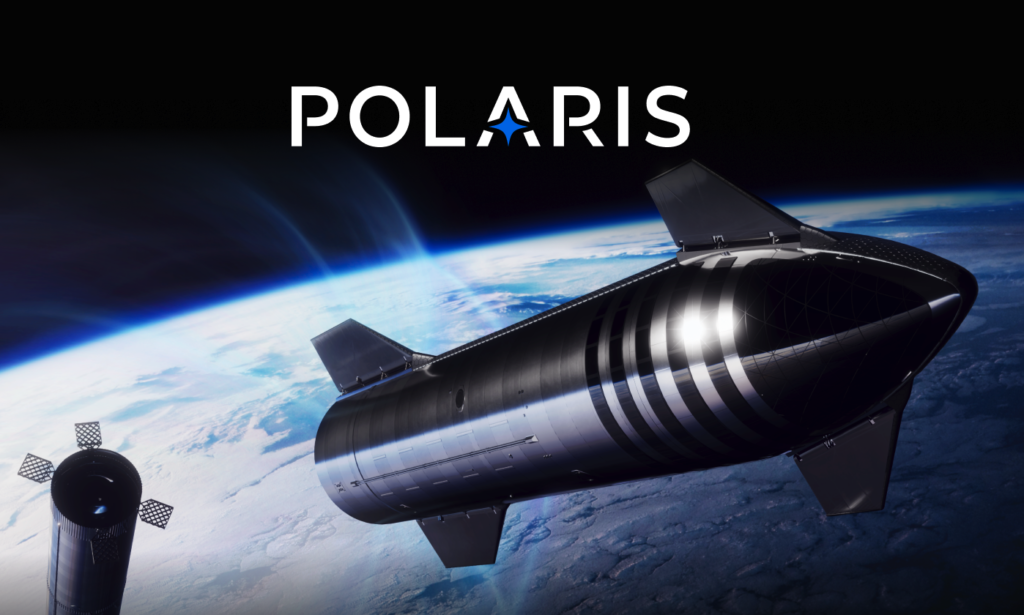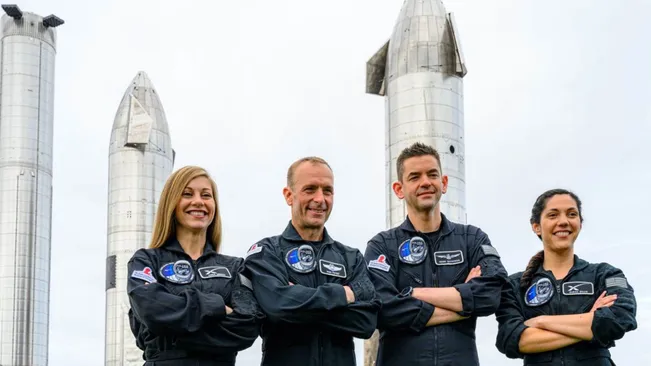“Polaris Dawn spacewalk mission” is an ambitious space mission that marks a significant step forward in commercial space exploration. It’s the first mission of the Polaris Program, a series of human spaceflight missions designed to advance technology, conduct scientific research, and prepare for more challenging missions in the future, such as those to the Moon and Mars.
Early on Tuesday, August 27, the Polaris Dawn mission will take off from SpaceX’s Launch Complex-39A at NASA’s Kennedy Space Center. This pad served as the foundation for every crewed Apollo mission to the moon. It’s true that LC-39A has been the launch pad for all of SpaceX’s astronaut launches to date, but it’s especially appropriate that Polaris Dawn’s crew will launch from there as well, given this mission will carry them farther than any crewed flight has since Apollo 17, in 1972.

Key Highlights of the Polaris Dawn Mission:
Crewed Mission: Polaris Dawn will carry a crew of four astronauts. The mission is led by Jared Isaacman, a tech entrepreneur who also led the Inspiration4 mission, the first all-civilian spaceflight.
Altitude Record: One of the mission’s main goals is to reach a higher orbit than any other human spaceflight since the Apollo missions. The crew is expected to fly to an altitude greater than 1,400 kilometers (about 870 miles) above Earth, which is farther than the International Space Station’s orbit.
First Spacewalk by a Commercial Crew: Polaris Dawn is set to conduct the first-ever spacewalk (extravehicular activity) by a crew of a commercial mission. This will be a significant milestone in the history of private space exploration.
SpaceX Dragon Capsule: The mission will use SpaceX’s Dragon spacecraft, which has already proven its reliability in multiple missions to the International Space Station. However, this mission will push the Dragon capsule to new limits, testing its capabilities for future deep space exploration.
Scientific Research: The crew will also carry out various scientific experiments during the mission. These experiments will focus on health, space radiation, and other key areas that are crucial for future missions to the Moon, Mars, and beyond.
Fundraising and Awareness: Like the Inspiration4 mission, Polaris Dawn will also aim to raise awareness and funds for important causes, continuing the tradition of combining space exploration with philanthropy.
Polaris Dawn is an ambitious space mission that marks a significant step forward in commercial space exploration. It’s the first mission of the Polaris Program, a series of human spaceflight missions designed to advance technology, conduct scientific research, and prepare for more challenging missions in the future, such as those to the Moon and Mars.

Detailed Aspects of the Polaris Dawn Mission:
- Mission Leadership and Crew:
Jared Isaacman: The mission commander is Jared Isaacman, a billionaire entrepreneur and experienced pilot. He previously led the Inspiration4 mission, which was the first all-civilian spaceflight. His leadership in Polaris Dawn highlights the growing role of private individuals and companies in space exploration.
Crew Members: The crew will include three other members:
Scott “Kidd” Poteet: A retired Air Force Lieutenant Colonel and a veteran of multiple fighter aircraft. He has also worked with Isaacman on the Inspiration4 mission.
Sarah Gillis: A lead space operations engineer at SpaceX, she has played a key role in training NASA astronauts for Dragon missions.
Anna Menon: A SpaceX lead engineer for astronaut operations, who has experience with NASA missions and human spaceflight training. - Mission Objectives:
High-Altitude Orbit: Polaris Dawn aims to reach the highest Earth orbit of any human spaceflight since the Apollo missions, possibly exceeding 1,400 kilometers. This will allow the crew to study the Van Allen radiation belts and gather data on how human bodies react to higher levels of cosmic radiation.
Spacewalk (EVA): A key objective is to conduct the first-ever commercial spacewalk. The crew will test new spacesuits developed by SpaceX, designed for greater flexibility and durability in space. This spacewalk will help prepare for future missions to the Moon and Mars, where similar activities will be essential.
Testing Starlink Laser Communications: The mission will test SpaceX’s Starlink satellite network’s laser-based communication technology, which could be critical for maintaining high-speed data links on long-duration missions, especially to distant destinations like Mars. - Scientific Research:
Radiation Studies: The mission will involve extensive research on space radiation, which poses significant risks to astronauts on long-duration missions. By traveling to a higher orbit, the crew will gather valuable data on radiation exposure and its effects on the human body.
Health Monitoring: The crew will undergo continuous health monitoring to study the impacts of space travel on human physiology. This research will include studies on vision, sleep patterns, and immune system function, contributing to the understanding of how space affects human health.
Microsatellite Deployment: Polaris Dawn might also involve deploying small satellites (CubeSats) for various research purposes, although details on this aspect are yet to be confirmed. - Impact on Future Space Missions:
Advancing Space Technology: The mission will test new technologies, such as SpaceX’s next-generation spacesuits and Starlink communications. Success in these areas will be critical for future missions, especially those involving deep space exploration.
Precursor to Lunar and Martian Missions: The mission’s achievements will inform future human exploration missions, particularly those planned for the Moon (Artemis program) and Mars. The experience gained from Polaris Dawn will help address the challenges of long-duration space travel, including radiation protection, spacecraft endurance, and astronaut health.
Commercial Space Exploration: Polaris Dawn is a significant milestone in the commercialization of space. By pushing the boundaries of what commercial space missions can achieve, it sets the stage for future private ventures beyond Earth’s orbit. - Cultural and Philanthropic Impact:
Inspiration and Education: Like the Inspiration4 mission, Polaris Dawn aims to inspire the next generation of scientists, engineers, and explorers. The mission will be accompanied by educational outreach programs to engage the public, particularly young people, in science, technology, engineering, and math (STEM) fields.
Charitable Goals: The mission will likely continue the trend of integrating space exploration with charitable causes, raising funds and awareness for important issues. While specific details have not been announced, it’s expected that Polaris Dawn will support similar initiatives as Inspiration4, which raised millions for St. Jude Children’s Research Hospital.
Conclusion:
Polaris Dawn represents a bold step into the future of space exploration. By combining high-altitude orbits, the first commercial spacewalk, and cutting-edge scientific research, this mission is setting new standards for what private spaceflight can achieve. As the first in a series of missions under the Polaris Program, it will lay the groundwork for even more ambitious ventures, bringing humanity closer to the Moon, Mars, and beyond.
